How To Use ChatGPT for Translations: Full Guidelines 2024
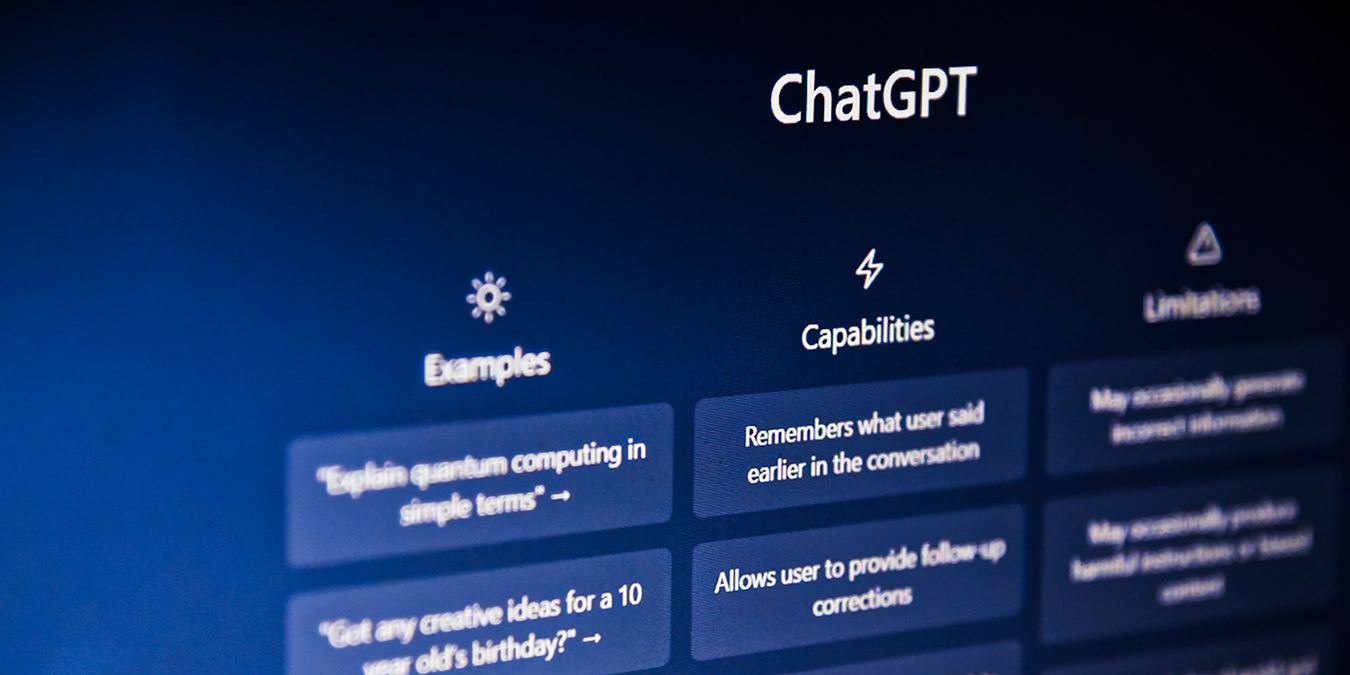
GPT-4 is arguably one of the most helpful translation tools to emerge in decades. Sure, Google Translate and other services have been around for a while, but ask any professional translator (or anyone who speaks the translated language for that matter) and they’ll tell you that at best those services are only really good for those times when you’re blanking on a word you already-sort-of-know.
Thanks to the context-sensitive nature of GPT-4, you can now get precise results, maintain cohesion, and even conserve the tone and style of the original piece.
That said, ChatGPT is just like any other tool. You need to know how to use it to get the best results. As someone who has worked as a professional translator, I’m here to guide you through the best practices for getting high-quality translations using ChatGPT.
I’ll be upfront with you. Your best bet is to use a custom GPT designed for translation, and my top recommendation is Translation Wizard. However, you’ll still need to know how to use it to achieve the best results. Keep reading to discover how to create high-quality translations using ChatGPT.
How We Tested Translation Quality
Besides extensive preliminary research, I used my experience as a Spanish translator to assess the quality of a variety of text samples with different prompts, word counts, and difficulty levels. I also tried several prompts to get ChatGPT to translate fragments from famous books and compared the generated results with official, published translations.
Method 1 – Manual Prompting
With simple translations, GPT-4 does an admirable job on its own. All you need to do is head over to ChatGPT, open a new chat, and prompt it to “translate the following from (its original language) into (your desired language).” If you’re looking to translate a hefty bit of text, I’d suggest trying to avoid asking ChatGPT to “please” translate, since you’ll be wasting valuable tokens.
If possible, prompting ChatGPT in the original language might also yield better results. So, for example, a good prompt for English to Spanish translations would be “Translate the following into Spanish,” while a good prompt for Spanish to English translations would be “Traduce lo siguiente al Ingles.”
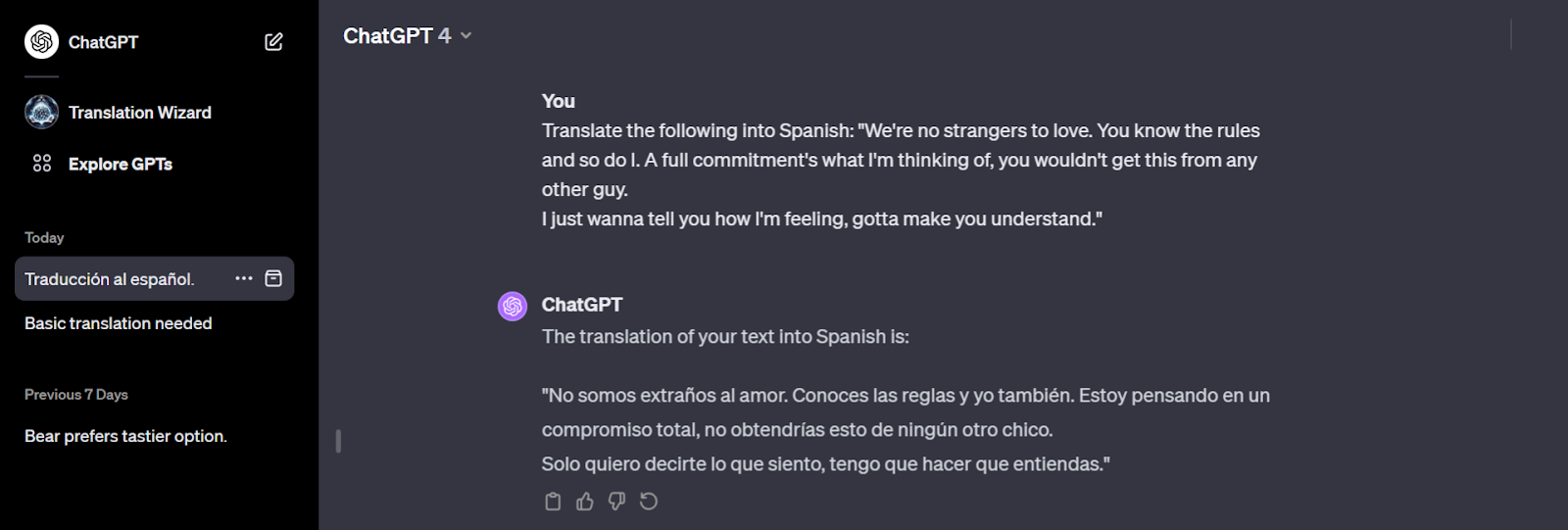
- Style and Tone. ChatGPT’s translation can accurately convey the literal meaning of the original text, but it doesn’t do such a great job conveying the tone.
- Length. For text longer than two brief paragraphs, the translation might fail to include context clues and references to earlier aspects of the text.
- Search Engine Optimization (SEO). If you want to translate content for a blog or a webpage, ChatGPT’s translations don’t always keep the right keywords and structure for the best search engine results in other languages.
- Regionalisms. All languages have several localized dialects across the world. If you’re translating an informal text filled with regionalisms, ChatGPT doesn’t do a very good job of conserving the casual tone and local idioms.
If you want to optimize your translations to account for these considerations, I recommend using a custom GPT that has built-in data to help ensure better translation results. That said, there are specific prompting instructions that can help you achieve better results, even on GPT-4. If you want to learn how to optimize translations for these aspects, be it in GPT4 or not, check out the section below.
Method 2 – Using a Custom GPT
A Generative Pre-Trained Transformer (GPT) is a customized set of training data and instructions to help ChatGPT deliver results for a specific purpose. Right now, there are custom GPTs available to help you code, give you cooking instructions, and even teach you how to do laundry. And of course, you can also use custom GPTs to further improve ChatGPT’s translation results.
After extensive research, my top recommendation is Translation Wizard. Not only can it deliver outstanding results, but it also includes a comprehensive list of features to fine-tune your translation for specific requirements. I’ll give you a rundown on how to use Translation Wizard for different situations, as well as prompting instructions to get the best results with GPT-4.
How to Install Custom GPTs
To install Translation Wizard or any other custom GPT, all you have to do is log into your ChatGPT account and click on “Explore GPTs” under the ChatGPT logo. Then, you can either search from a collection of different categories or enter the name of the GPT you want directly into the search bar.
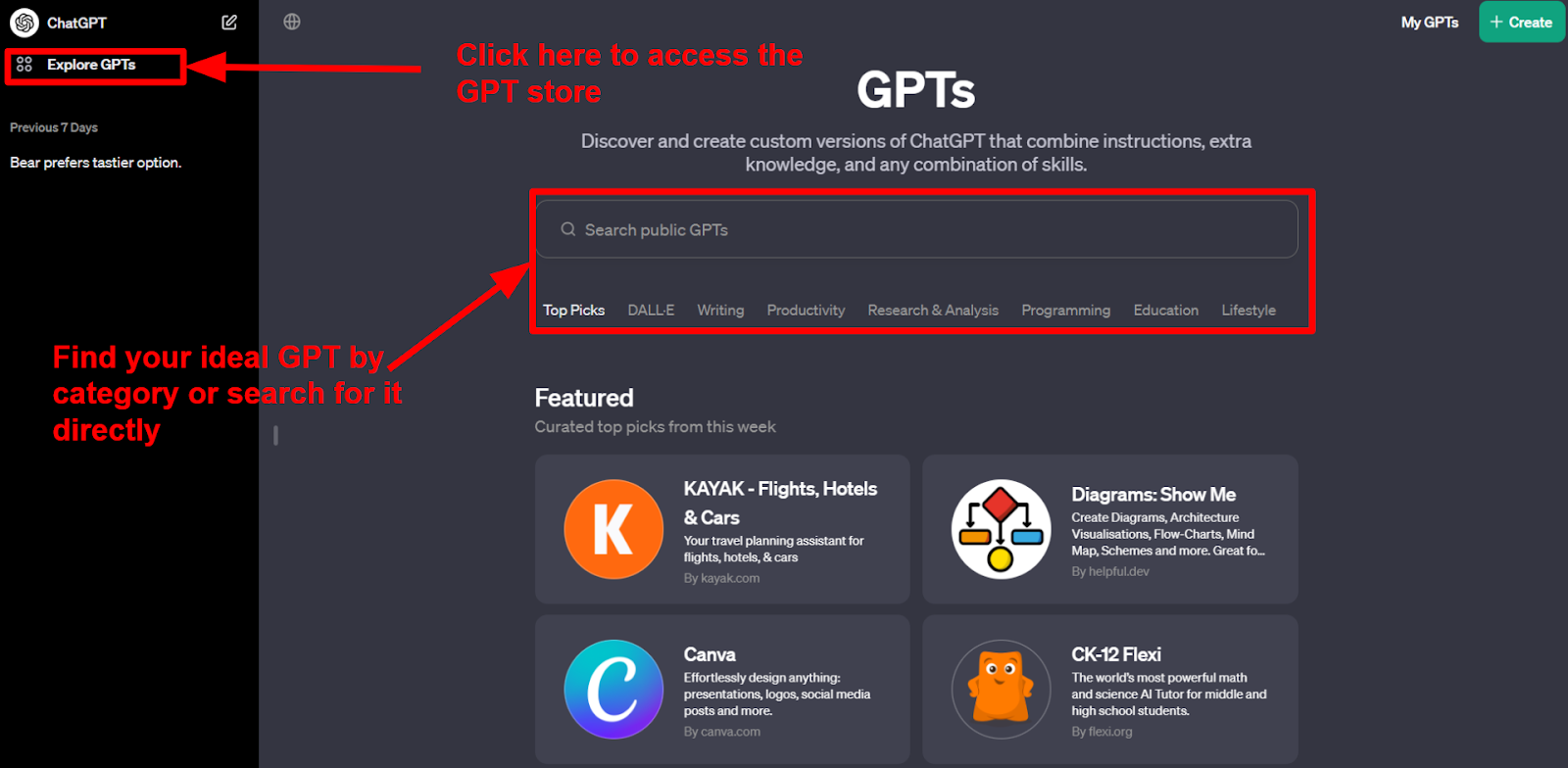
Since the GPT store doesn’t have a “translation” category yet, you’ll have to search for Translation Wizard directly. Once you find it, click on its icon to open a new chat and start using it right away. At the moment, you can only install custom GPTs with a premium ChatGPT plan.
Using Translation Wizard for Simple Translations
For basic translations, all you have to do is click on the “I need basic translation” option in the chat. Translation Wizard will then ask you for the text to translate and the language you wish to translate it to. (You’ll see in the example below that I used an equal sign to designate both, but this is simply because of personal preference. Whichever instructions you use will work out just fine so long as they’re clear.)

To be completely honest, the basic translation results for both GPT-4 and Translation Wizard were nearly identical in most of my tests, so you might not want to go through all the trouble of installing it for simple bits of text.
Even in the same language, translating a scientific paper isn’t the same as translating an SEO-optimized landing page or a heartfelt personal blog. Luckily, Translation Wizard allows you to set custom style rules from the start.
If you’re looking for a specific style, Translation Wizard can analyze copy from a URL address and adjust its translation to fit the style of writing. To do this, start a chat with Translation Wizard and select the “I need translation that mimics a style from URL” option.
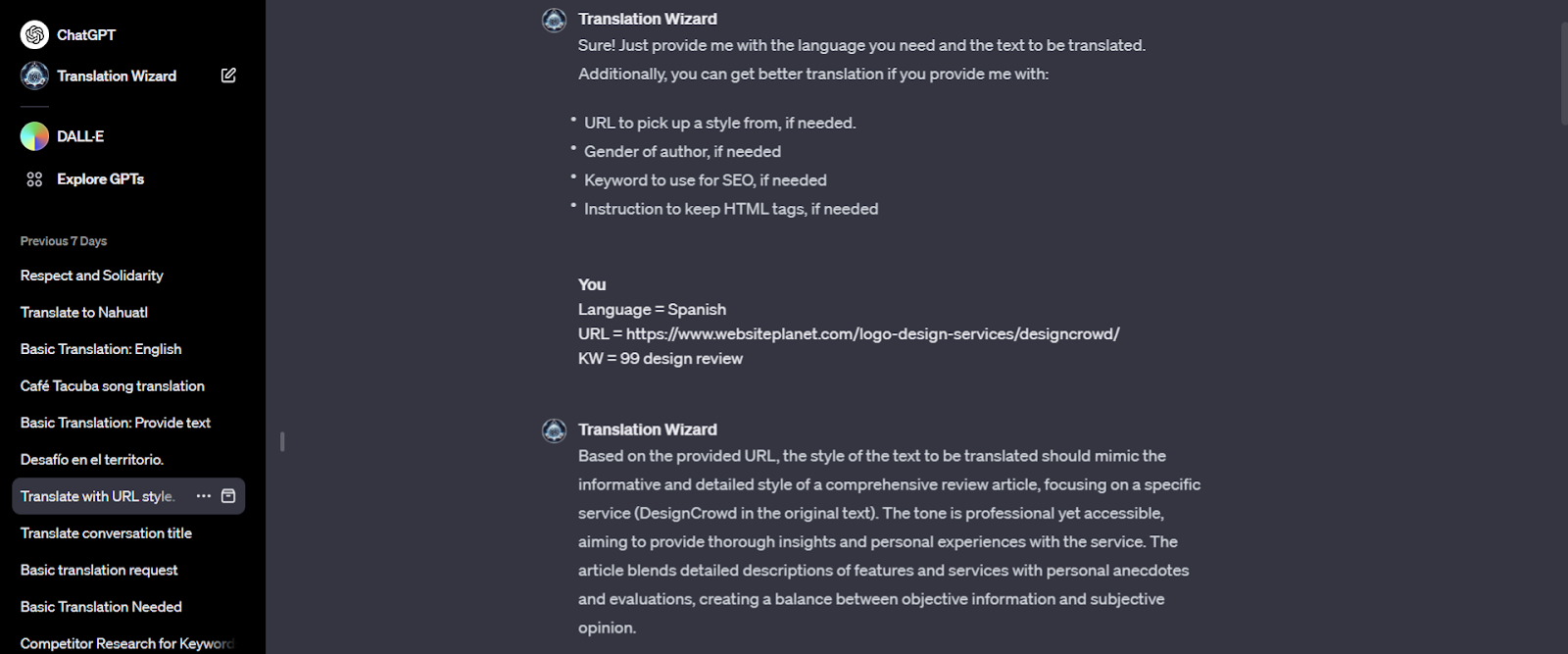
If you have a particular writing style and you’re trying to make your content available internationally, this can be an invaluable tool to ensure that your personality or brand gets across. What’s more, the text you want to translate doesn’t have to be the same as the one in your URL example.
This simple feature opens up a world of possibilities, like translating complex texts into simple language, or ensuring that your translation of a personality-filled piece is as entertaining to read in any location.
Even if you don’t have a specific URL in mind, you can also prompt Translation Wizard to use a specific tone or style. Many languages also have gendered first-person pronouns – if you provide Translation Wizard with the gender of the author, the output will keep the text grammatically correct.
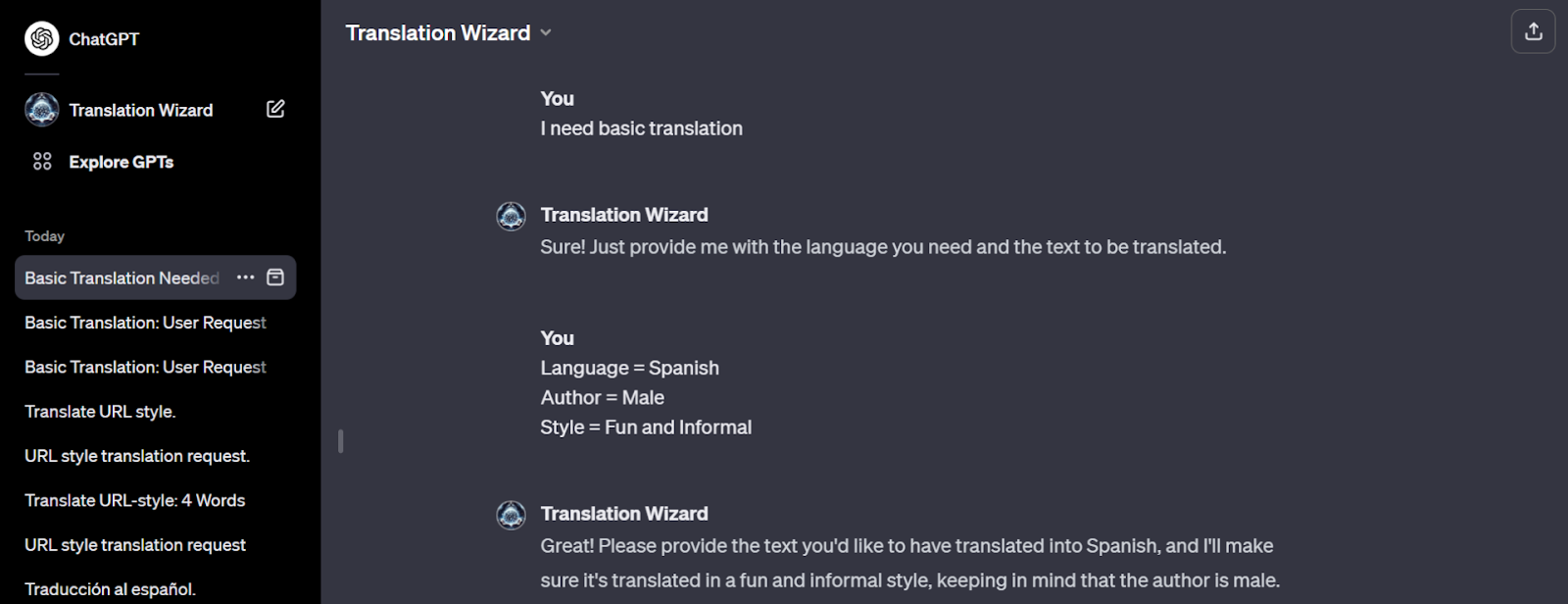
GPT-4 doesn’t offer the same URL translation feature, but you can ask it to refine the translation for a specific style. For this, all you need to do is include a final note in your prompt telling it to “translate with a (formal, informal, educative, etc.) style.” That said, GPT-4 prioritizes the desired style over accuracy, so you risk changing the meaning of the original text.
Translation Wizard vs GPT-4 for Regionalisms
Regardless of whether you’re using a custom GPT or GPT-4, the more complicated the original text is, the more ChatGPT will struggle with translation. While ChatGPT is perfectly clear on the meaning of “ignominious,” sometimes you might want to convey the informal nature of the original text. ChatGPT can have a harder time translating slang words and regionalisms.
Once again, Translation Wizard does a far better job of adapting informal language to specific dialects. As a test, I chose a slang-heavy song in Spanish and asked both GPT-4 and Translation Wizard to translate it into different English dialects like British English, US English, and Scottish English.
While GPT-4 could mostly adapt specific words, the regional translations often lacked coherence or overused localisms. The result was less “informal British English” and more “someone doing a frankly offensive impression of what informal British English sounds like.” Translation Wizard, on the other hand, adapted the regional language appropriately without overdoing it or losing the meaning of the text.
Though the results were different, the necessary prompting is the same for both GPT-4 and Translation Wizard. If you want to localize your translation to a specific zone, all you have to do is specify which region you want the translation to adapt to. For example, instead of writing “Spanish,” you can specify “Mexican Spanish,” “Argentine Spanish,” “Chilean Spanish,” and so on.
Translation Wizard for SEO-Optimized Translations
If you’re looking to translate SEO-optimized content to have the best search engine results worldwide, Translation Wizard comes with special features for SEO optimization such as keeping HTML tags untranslated or ensuring that the translated text keeps certain keywords to improve SEO rankings.
Once again, you’ll just need to open a new chat with Translation Wizard and select “I need SEO-optimized translation.” After that, you can provide it with your desired keywords, and add any additional details.

Though you can try to adjust your prompting in GPT-4, there’s no real equivalent to Translation Wizard’s SEO-optimized translation options.
Translation Wizard for Web Content
Another feature exclusive to Translation Wizard is the capacity to translate content with HTML tags intact. If you’re translating anything directly from plaintext like a WordPress post or self-designed website page, Translation Wizard can conserve the exact formatting of your original work.
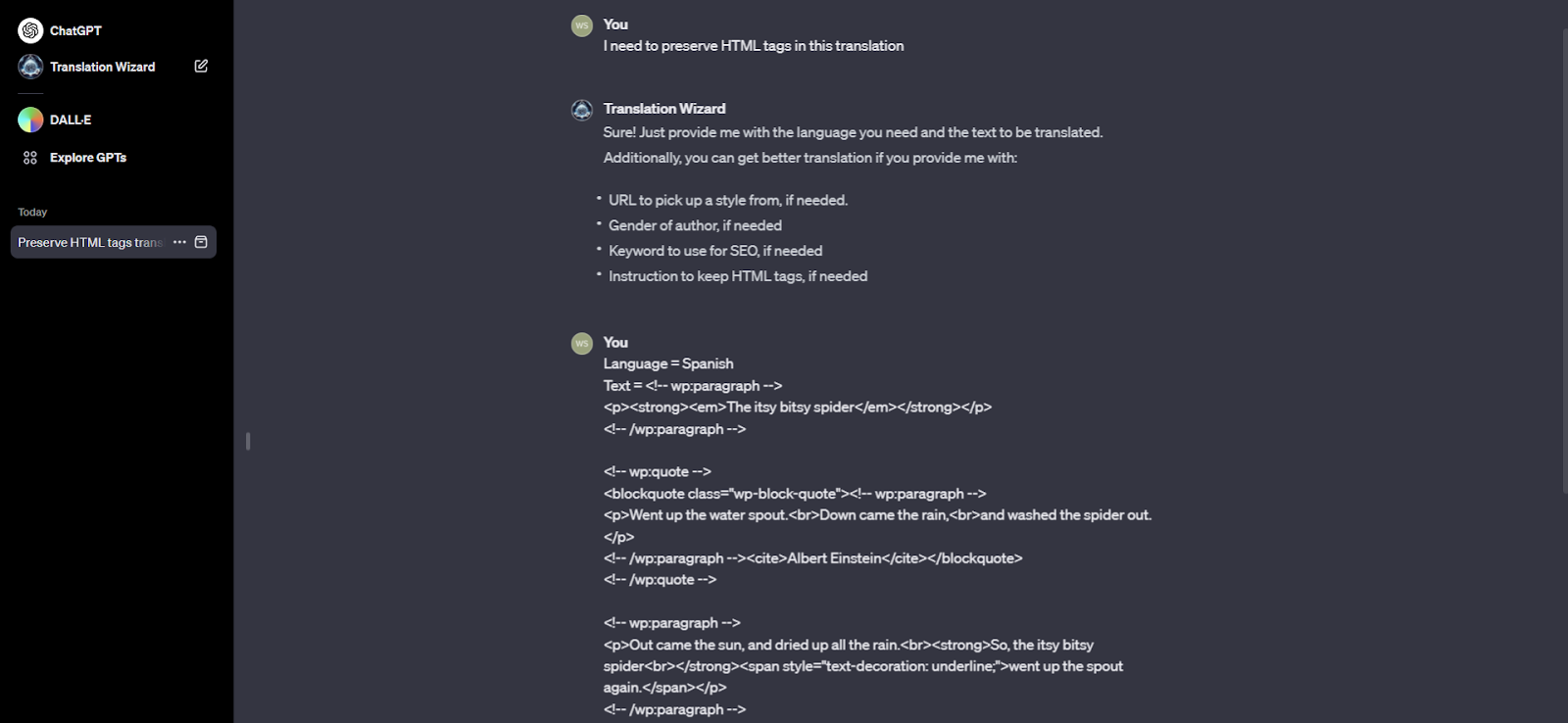
Translation Wizard retained formatting tags like “<p>,” “<strong>,” and “<blockquote>.” So, instead of painstakingly re-formatting the translated text yourself, you can feel confident knowing that you’ll be able to just copy-paste the translation in HTML mode.
As an additional test, Translation Wizard seemed to be able to conserve the necessary tags when translating a small bit of LaTeX text, so you might even be able to use it for academic translations. That said, I haven’t tested its LaTeX accuracy in full, nor was the GPT designed with it in mind, so you might want to double-check results before making any commitment.
Translation GPTs to Avoid
I haven’t been subtle with my preference for Translation Wizard, but there are other high-quality translation GPTs available with their own strengths and weaknesses – the right choice for you might come down to what you need to translate. That said, there are translation GPTs out there that are simply not worth your effort.
While the following options still delivered better results than non-AI translation tools like Google Translate, you could still get better translations by simply using GPT-4 or even GPT-3.5.
Just Translate
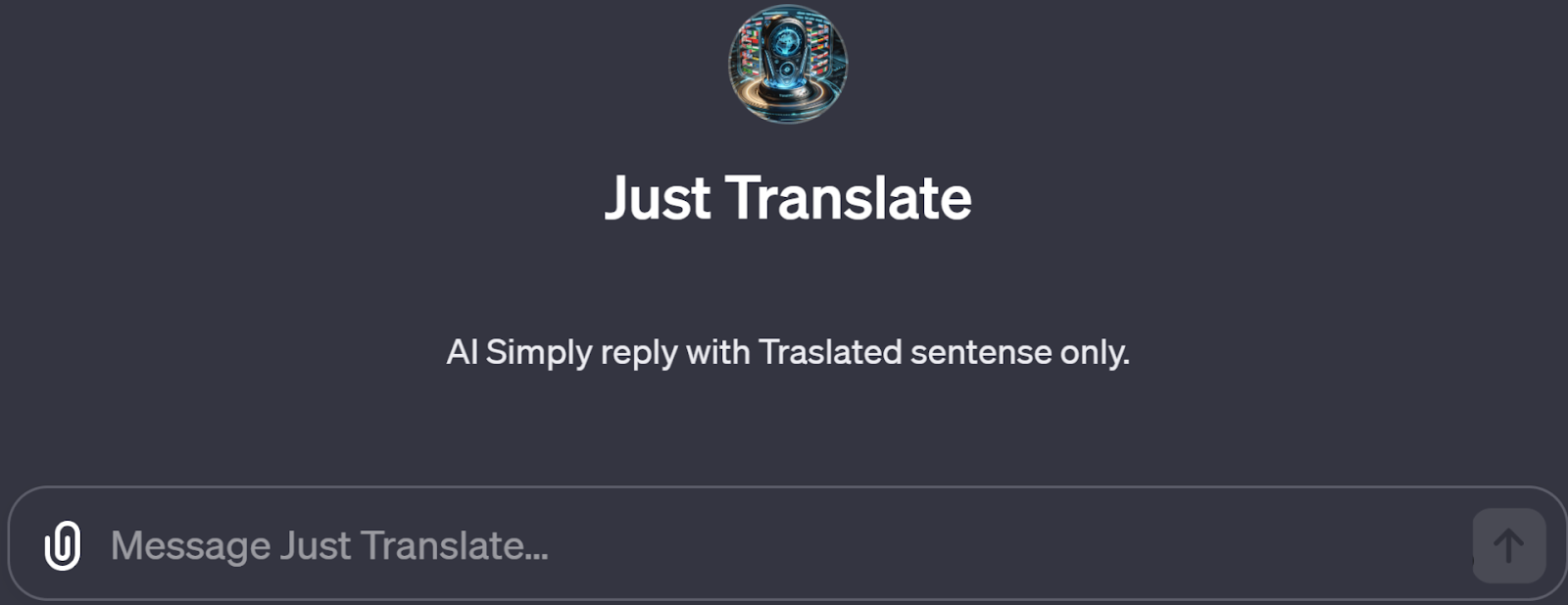
Just Translate advertises itself in the GPT store as a straightforward translation tool that, as the name implies, just translates. Just Translate isn’t on this list because the results were bad, but rather because they were nearly identical to the results delivered by GPT-4 on several tests.
The appeal of Just Translate seems to be that it saves you the trouble of prompting but considering that prompting GPT-4 for translations isn’t a particularly complex process, I simply failed to see what Just Translate brought to the table.
Bilingual Bard
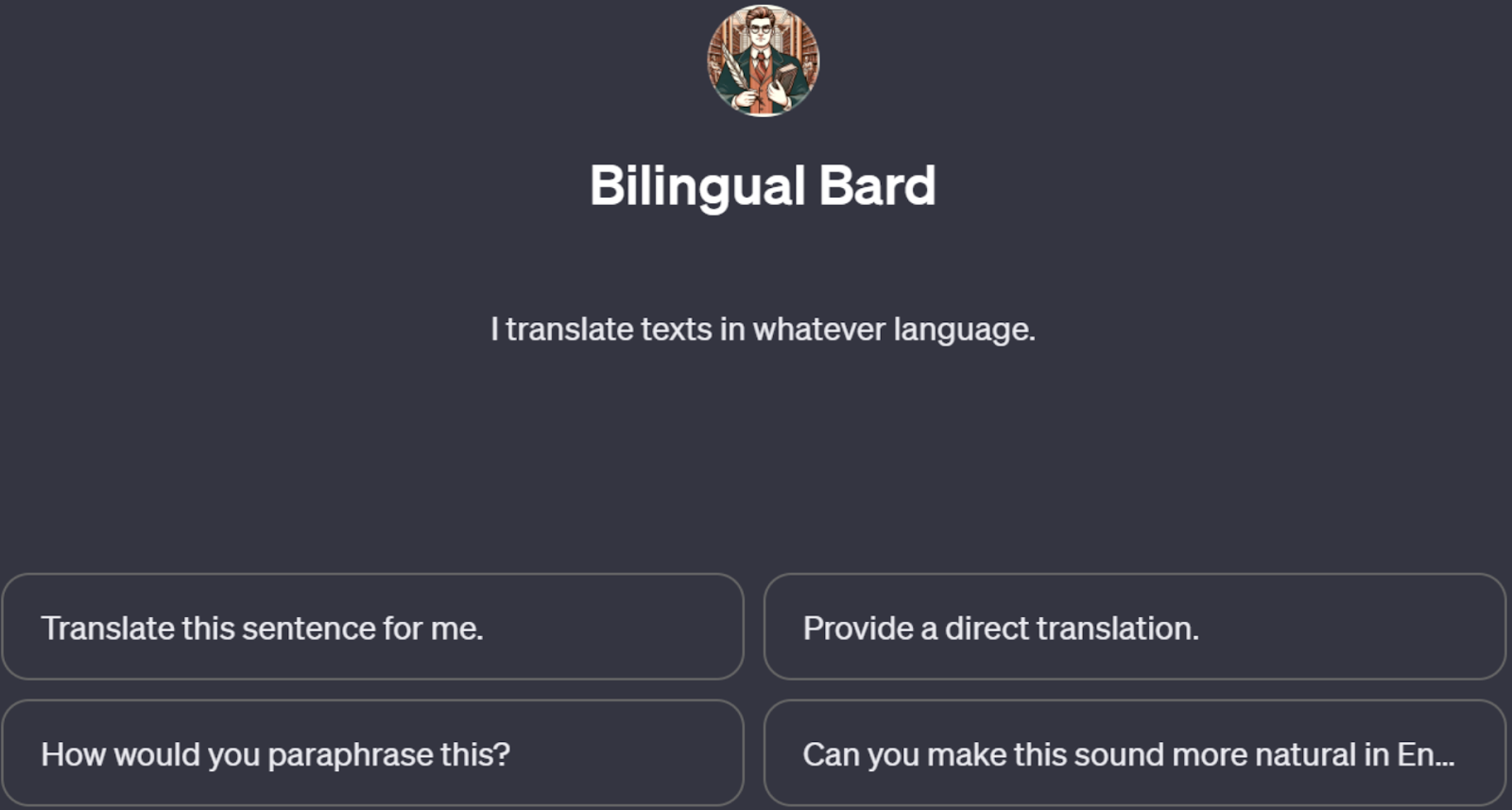
Out of all the GPTs I tested, this one was the only one that delivered truly bad results. Other translation GPTs might not have “wowed” me or simply failed to differentiate themselves from GPT-4, but nothing was really bad.
For whatever reason, Bilingual Bard was the exception. From a Spanish text, it returned a stilted and weirdly constructed English translation. It was the only GPT to offer various translated alternatives, but that doesn’t really count when none of the suggested alternatives are any better.
Make the Most Out of ChatGPT’s Translation Capabilities
If used correctly, translations using ChatGPT can open up a world of possibilities and allow you to share your content with the world. However, just like with any tool, you need to be familiar with the best techniques and practices to make the most out of it. If you don’t want to go mad finding the best prompts, you can always use a GPT specialized for translation, ensuring that you have one less thing to worry about.
Frequently Ask Questions
Can I use ChatGPT for translations?
Yes, you can! While the simplest way is to prompt it with “translate from [language 1] to [language 2],” you can get a lot more use out of it if you know the right prompts. Alternatively, you can use a custom translation GPT for faster and more accurate results.
Can I use GPT-3.5 for translations?
I’d recommend at least getting a premium OpenAI account to access GPT-4 if you’re serious about translating content. While GTP-3.5 is capable of translations, the quality isn’t much better than what you’d get with tools like Google Translate. Still, even with GPT-4, you need to know the best practices to get high-quality translations.
Is ChatGPT a good tool for translating from English?
That greatly depends on which language you’re translating. While GPT-4 can generate accurate translations for popular languages, it might struggle with idioms, regionalisms, or even entire languages with few active speakers. A good way to ensure the best translation quality is by using a custom GPT made specifically for translations.
Is ChatGPT a good tool for translating into English?
Overall, yes! Since the data used to train most GPTs (including GPT-4) is in English, you’ll tend to get high-quality results when translating text into English. That might change, though, if you want to translate your text into a specific English dialect, like US or Canadian English. Luckily, custom GPTs like Translation Wizard can help you improve localized results.





One Comment